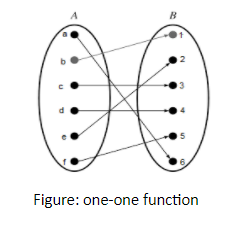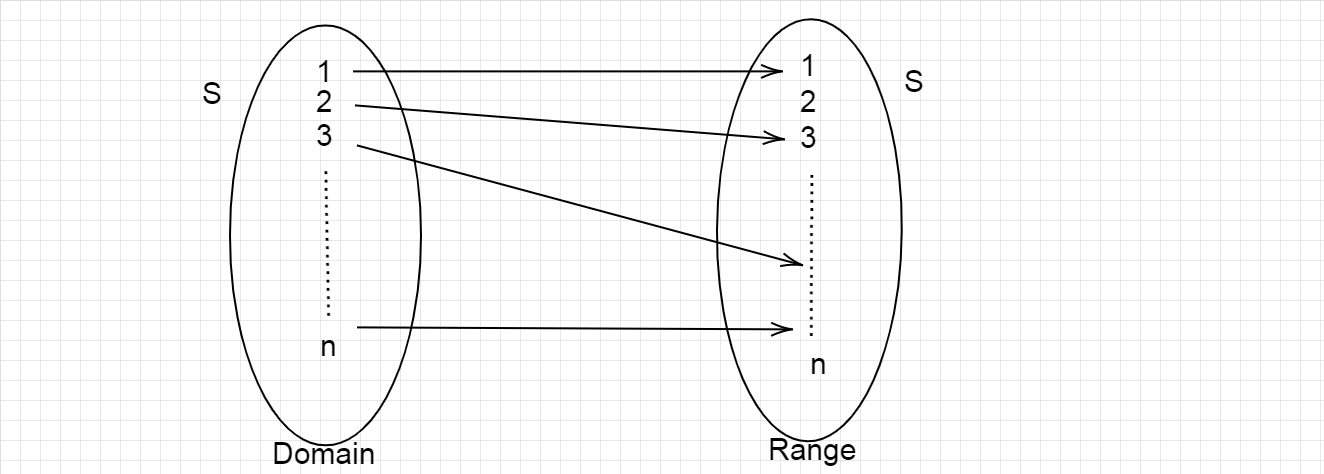Question
Question: One mapping is selected at random from all mappings of the set \[S = \\{ 1,2,3,....,n\\} \] into its...
One mapping is selected at random from all mappings of the set S=1,2,3,....,n into itself. If the probability that mapping is one-one is 323 then the value of n is ?
A) 2
B) 3
C) 4
D) None of these
Solution
A relation R: A→Bis defined as a function if every element of set A is mapped to one element of set B, i.e. , each object has only one image.

One-one function: When each element of set B is mapped to only one element of set A, i.e., each object in set A has a unique image in set B, then the function is called one-one function.
Let the number of elements in set A = n(A) = a
The number of elements in set B = n(B) = b
Necessary condition : b ⩾ a [ for one-one function f: A→B] …… (1)
Total number of functions =ba …… (2)
Number of one-one functions =C(b,a)⋅a! (∵′C′is combination) …… (3)
Complete step by step solution:
The mapping of set S=1,2,3,....,n into itself can be drawn as,

Where the image of every element x in the domain, there exists an element f(x) in the range.
Step 1
Given set S=1,2,3,....,n
Step 2
Function f: S→Sis defined. (∵given)
Step 3
Number of elements in set S = n(S) = n.
Total number of functions f: S→S = nn (from (2)) …… (4)
Step 4
Number of one-one functions f:S→S = C(n,n).n! (from (3))
=n! …… (5)
Step 5
Probability (selecting mapping is one-one) = total number of functions f:S→Snumber of one - one functions f:S→S =323
(∵given)
=nnn!=323 (from (4) and (5)) ∴ n = 4 [by inspection]
Therefore, the correct option is (C), n=4.
Note:
Another classification of functions is onto functions. If for functions f:A→Bthe co-domain set of B is also the range for the function, then the function is called an onto function.
The functions which are both one-one and onto are called bijective functions.
